Fire casts a long shadow
This week: Fire casts a long shadow; Making plates; Decisions, decisions…; Pineapple trees; Arbitrary lines; Last job in the hall;
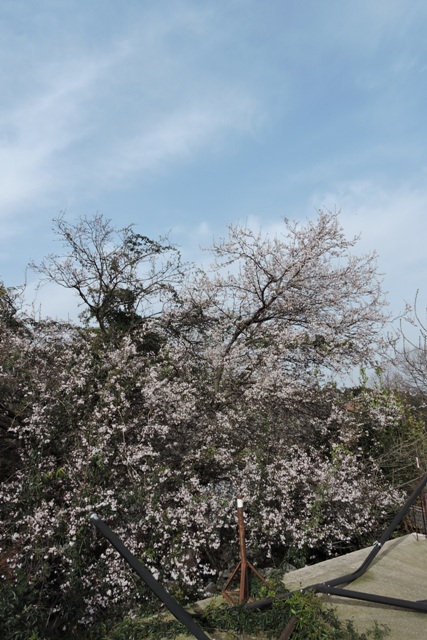
Once again it is Saturday and I have NO idea where the week just past has gone.
On Wednesday it seemed like Thursday and I thought I had gained a day, then I seem to have lost Friday altogether. I must have left it in the workshop somewhere…
The weather has been very mixed with some heavy rain followed by periods of warm sunshine. This has meant that I have been able to get out and do jobs in the garden; things like finishing the pruning, which I have neglected.
The first buds have swollen this week on the grape vines and the date has been added to my Springwatch calendar. This has all happened in a couple of days.
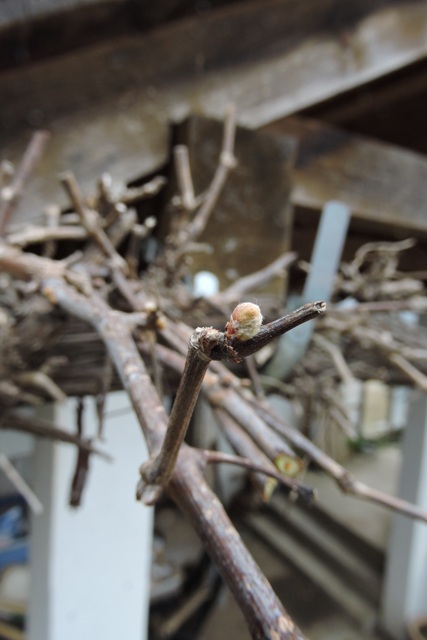
I need to do some more work on the spreadsheet to distinguish each year from year. As the climate changes, every year has been different to previous years.
However currently, although I record key dates for every species individually for each year, I only calculate an average change for all species, for all years.
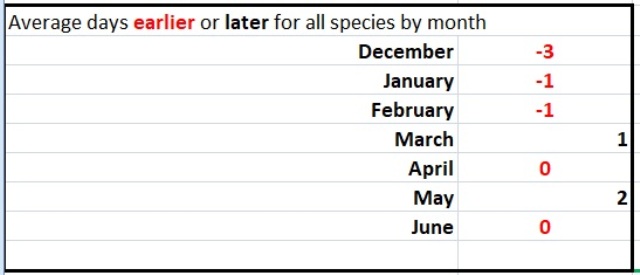
This shows just one or two days of change. However I know that this year events are anywhere from ten to 15 days earlier than last year.
What would be more descriptive and helpful to see, would be a year by year graph of the changes.
An average change of things happening two days earlier each year, over ten years, is actually a change of 20 days over the years. That is far more significant than just two days!
As Benjamin Disraeli once said, ‘”There are three kinds of lies: lies, dammed lies and statistics…”
My plum trees are showing their full blossom and the bees are feasting on the nectar in the flowers.
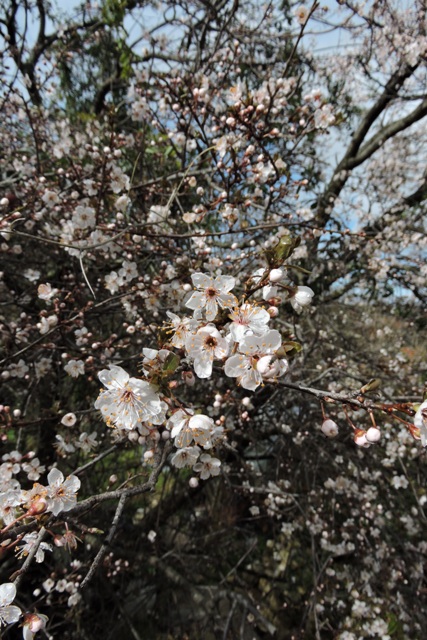
When I was doing more clearing and cleaning work in my new plots, I found the first Wild Asparagus spears. I got the weds cut down just in the nick of time…
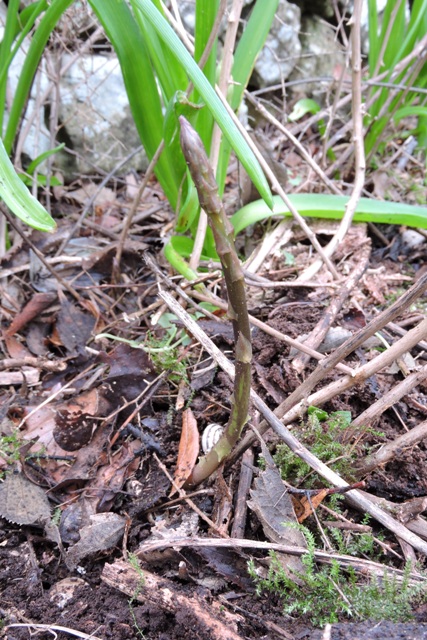
Spring is with out doubt my favourite time of year.
Fire casts a long shadow
I would like to have the Konoba finished by Easter. For clarity, that is Easter this year, in just four weeks time.
One job I had not completed is the wiring up of the lighting in the wall niches.
There are six small niches and a large one, where the old window to the donkey stable used to be.
I bought low profile flat panel LED’s some time ago and fitted out the first niche without a problem. I also fitted the two lights in the window niche.
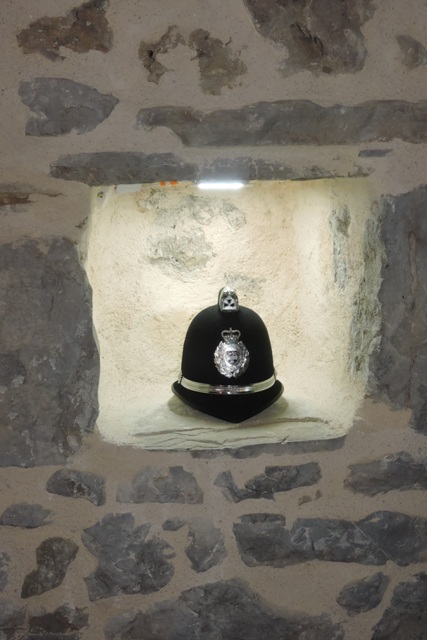
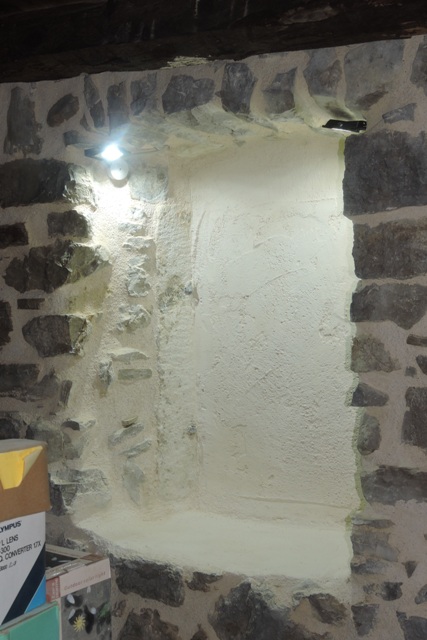
However when I tried to fit a couple of others, as I carefully drilled the stone, it shattered.
Throughout the Konoba there is visible evidence of the January 1943 fire. But there is more insidious, hidden evidence in the stones.
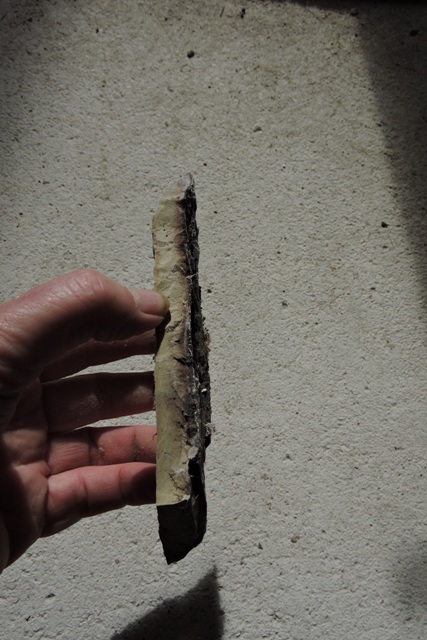
When many types of stone are heated to high temperature or are subjected to prolongued heating, the molecular struture is changed. This makes stones crack easily or become soft.
Much of the island’s base rock is Limestone, with bands of softer sandstone and harder granite. Stone houses were often build with a mix of all three.
The intense fire of 1943 has affected a lot of the stones, making them soft and shattering some. Where the sand blasting missed, blackening and soot is still visible.

Using a drill, even at a slow speed creates damage, even when none is visible to the naked eye.
When I was drilling the niches I had whole pieces of the stones come away. The result was that I gave up, until I could work out a better way to fix the lights.
Making plates
When I lifted the laminate floor, to install the stairs in the Konoba, the left over pieces of laminate gave me an idea.
Laminate in this case is basically just hardboard, but with a wood pattern on the outside face and a smooth surface on the downward facing side.
I have spent some time doing a trial and error method of fitting the lights.
First I cut a piece of laminate into 20 x 20 cm square plates, then established the centre with linesfrom each corner and positioned a light panel over it.
From that I knew where to drill holes to fit the panels and marked them, followed by a cutout in the laminate to take the low voltage cable to the LED unit.

I used my band saw to cut the channel and a “V” at the end to securely hold the orange power connector. Finally I drilled 8.5mm holes into the top, so the M6 nuts will be completely flush with the base.
The last job was to abuse one of my tools.
I tried several methods of scorring the surface, so that the adhesive I will use to attach the complete unit to the stones, will have something to key onto.
The laminate surface is so hard, that none of my hand tools would touch or mark the surface.
I finally tried using a circular hole saw, which has very sharp teeth, in an electric drill to remove pieces of the laminate surface. This worked, although it is not what the tool is intended for.
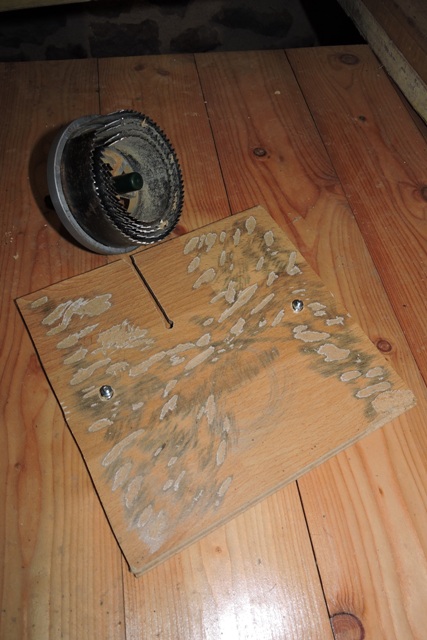
All the pieces lined up and I attached one of the LED pannel lights to each plate.
The next part of the process was to glue electrical junction boxes into the niche. Again I am using glue because the side stones keep cracking.
Decisions, decisions…
I wonder what the builders were thinking when the built niches into the walls of Konobas.
The word in English has had the meaning of a recess in a wall since the 16th century. It comes directly from the French word “niche”, meaning a recess for a dog, which goes back to the 14th century.
Interestingly it is pronounced the same in both English and Croatian, Niša. Almost every Konoba I have been in here on the island has them.
Mine are different sizes and at differing heights, even in the same wall. Their depths vary too.
My oldest walls are more than one metre and 20cm thick, and some go a long way, over half a metre into the walls.
Probably they were used for storage, at a time in history when shelving didn’t exist and IKEA was a century into the future.
I took me a full morning to fit one of the panel lights, on its mounting board into one of my niches.
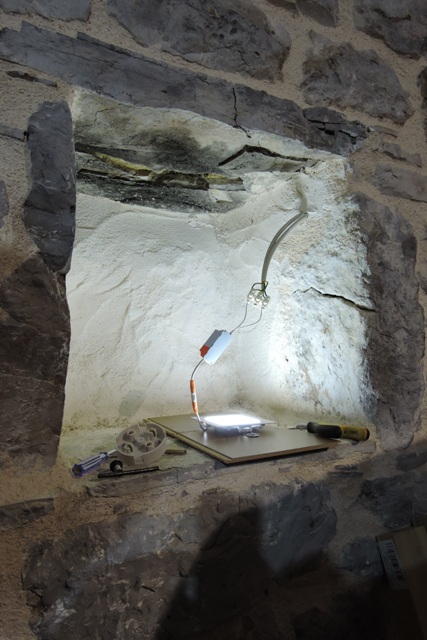
Once fitted, the light is almost invisible, unless you look up into the niche and even then it looks good.
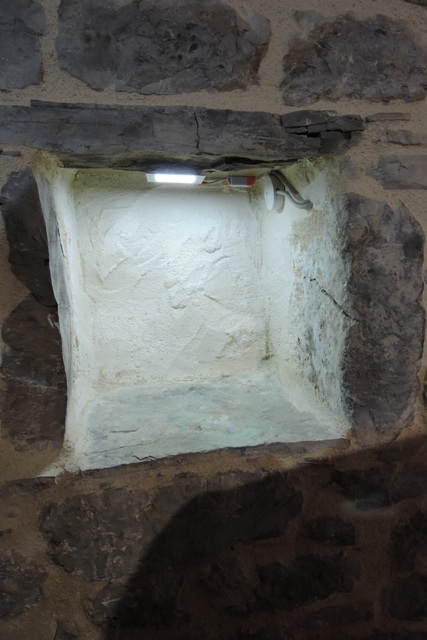
Connecting the wiring and fitting the lights in the last triple niche was more difficult because of its location, tight into a corner.
Fortunately I am mainly “left handed”, so working on a right wall was not difficult, even if there was a lack of working space inside the niche.
I bought tubes of adhesive from BEPO in Jelsa, at €12 each. After a discussion with the helpful staff about my needs, they suggested Sika 11 FC. “The best stone adhesive there is”, they said.
It takes 36 hours to completely harden but it has done the job.
I have used it to attach the electrical junction boxes to the side stones, and the lighting plates to the top of each niche.
Leaving everything for 48 hours for the adhesive to set gave me time to do some other jobs.
On Saturday morning, I made the last connections, then switched the lights on. I m delighted with the result.
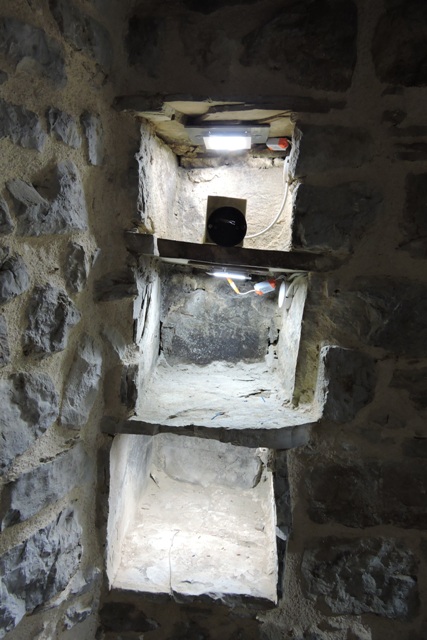
The shelves do lean at that rather drunken angle, it’s not your eyes or my photography!
At eye level there is some glare from the top light, so I will look for a reflector for the front.
Pineapple trees
I have done more clearing in my recently purchased garden extension.
On the land registry documents, it is listed as a “vineyard”, although I have found no evidence at all of vines being there, or even olives.
The description probably dates from when the Austo-Hungarian surveyors carried out the first ever survey in the mid 19th century.
A lot can change in 150 or more years… I am going to call it the “Eastern orchard”.
There are issues because ivy is spreading everywhere and there are some deep rooted perennial weeds.
However that said, because nothing has been done with the land for years, the soil is rich.
There was rain forecast for Thursday night, so I dug out some of the weeds near the boundary wall on Wednesday afternoon and was delighted to find a lot of worms.
I have few places where I ever find any worms because my soils are so poor and deficient in organic material.
As usual I have a plan for the eastern orchard. Step one was to get in, strim the weeds, cut down the dead wood and then try and keep it weed free this year.
I bought some fruit trees last year and this was an opportunity to plant two Pineapple Guava, Feijoa sellowiana. Two varieties are needed because Feijoa are barely self fertile.
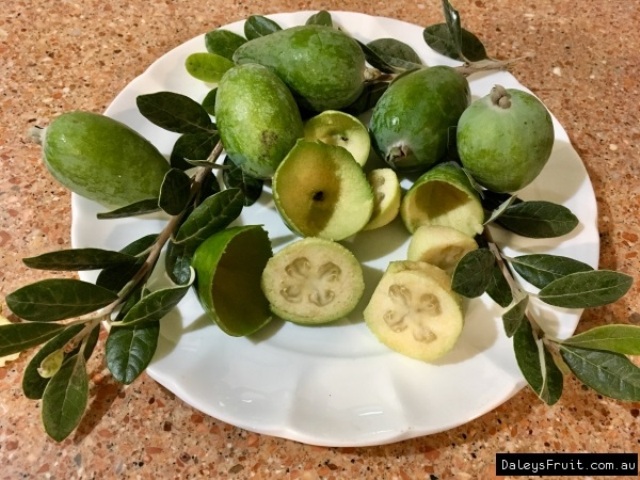
The trees originate from the west coast of South America and are now grown extensively in New Zealand.
What is unusual is that as well as the fruit, which look like avocados, the white flower petals are edible. They are sweet and crisp.

After planting I put a layer of manure around the base of each tree and now look forward to tasting their first fruit. The rain duly arrived and watered the new trees in well.
Arbitrary lines
We are now in March – but only just – called Ožujak in Croatian, meaning the “lying month”. This is because the weather in March can be very unstable.
March is also the last month of our winter season.
Winter this year has been consistently warmer than the average. Often by five degrees or more, which is a lot.
We have had more precipitation than average too, but only by around 50 mm or fifty litres/m².
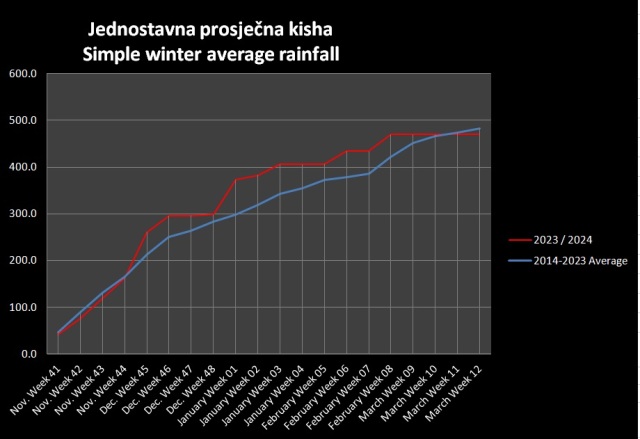
There are another four weeks to go, so we have only a month to go for the delimitative winter rainfall total.
I take the period from 1st November to 31st March as our winter, despite meteorological winter starting on 1st December and meteorological spring starting on 1st March.
This is because this is the Mediterranean “wet” season, when historically most of the year’s precipitation has fallen.
They are more than just arbitrary periods and actually are based on the definition of a Mediterranean climate, which is “Winter‘s cool and wet, summers hot and dry“.
Seasonal change really depends what your reference point is. In many temperate regions, the first signs of spring are usually the snow drops, aconites and crocus flowers emerging.

Here in Dol, my “spring” starts in December with the first bulbs. Interestingly this past winter I have not recorded a single night when the air temperature has dropped below zero ºC.
We have had temperatures down to +1ºC, which causes frost to appear on the ground and cold exposed surfaces, but because my digital thermometer is at the international standard height of 1.6 metres, it has registered a higher temperature.
Even then, the low temperatures have lasted only for little more than an hour or so, around or just before dawn.
Doing my weather station statistics for February, it is interesting to see that the 11 day running average temperature is climbing quickly.
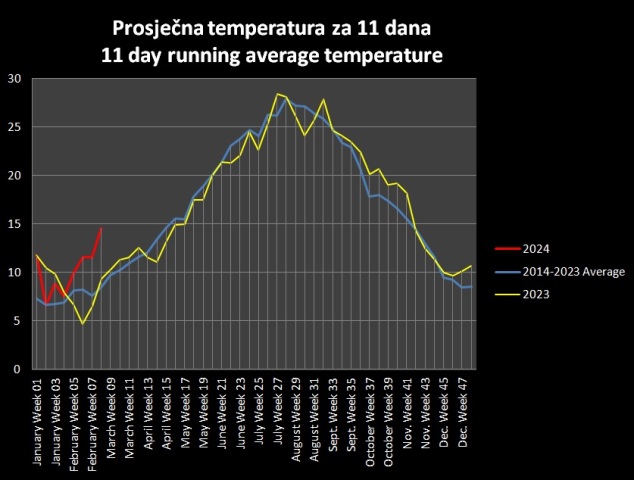
It is this temperature which is important for gardeners and growers. Plants can survive short spells of low temperature, but the 11 day average is what they use for their growth cycles.
Last job in the hall
I really want to get on and finish all my inside jobs now, so I can concentrate on working outside as the weather improves.
I have a hole in the wall in the hall, where I removed a small network cabinet.
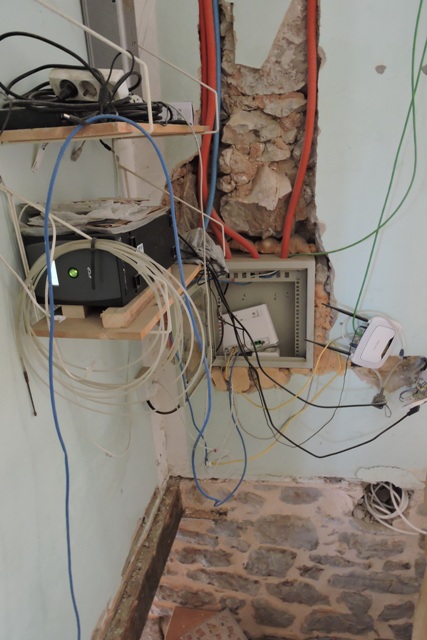
This is where the internet connection comes into the house, and where high speed ethernet cables begin their snaking path around my home.
With an average stone wall thickness of 70 cm, and in places internal walls which are over a metre thick, WiFi signals just will not penetrate and travel through my home.
For this reason I have hard wired high speed internet connection points into various rooms. But I need one place where all the cables can terminate neatly and where I can add extra equipment.
Here I am thinking of things like a UPS (Uninterruptable Power Supply), which keeps everything on, when the power fluctuates or goes off, as it often does.
I also need somewhere for the main router and in time I would like to add a network storage box.
Network Attached Storage or NAS, is just a huge memory stick, in a box, attached to the network.
This means that as I scan photographs on my dedicated scanning system, I can save them the the NAS. However they are then available to all the other computers on the system.
At the moment I have to plug external hard disc drives into my computer when I need to recover a photo from a stored directory.
I have a standard netowrk cabinet but I need to enlarge the original hole in the wall, in all three dimensions.

Because the hole is above the stairs, I have to work on planks over the stairs, so this week I made some permanent fittings.
This is so I can screw the planks into place and make sure they do not move when I am working on them.
With that done, I drew the outside dimensions of the new cabinet and then cut the plaster with the oscillating cutter, making neat, straight cuts.
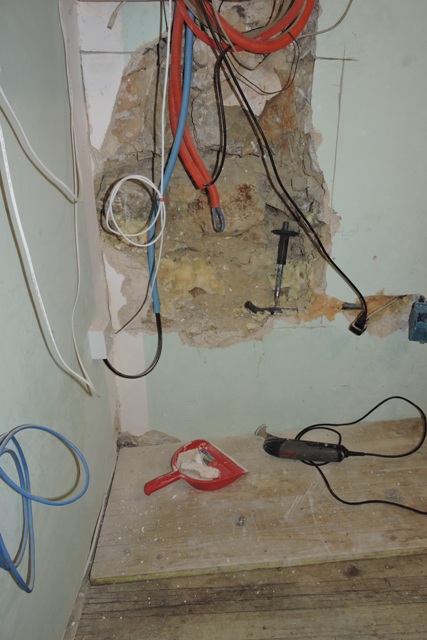
The outline is only very slightly larger than the existing hole in the plaster and wall.
Inevitably some of this old plaster will still crack, but it shouldn’t be too much. With all that done, I started on Saturday morning to enlarge the hole.
Because of the age of the walls and that they were built without mortar, it is a dirty and dusty job.
As usual, this work will carry over into next week, so I will have something to keep me occupied when the weather is slightly inclement.
It just would not be me if I didn’t carry work over from one week into the next, would it? NCG